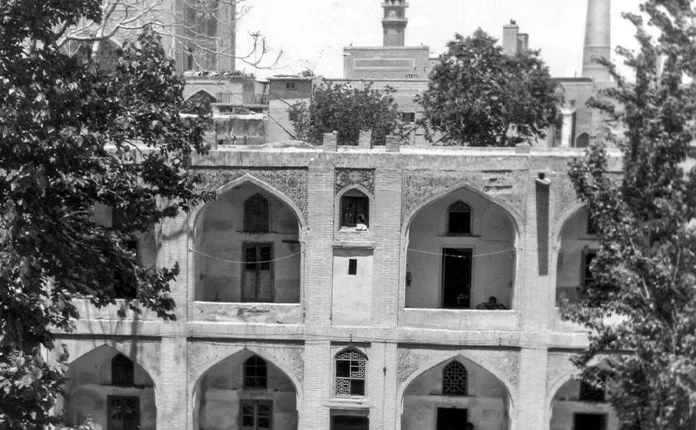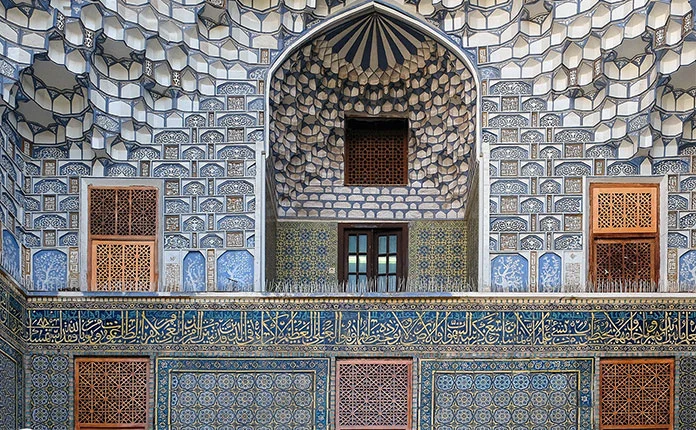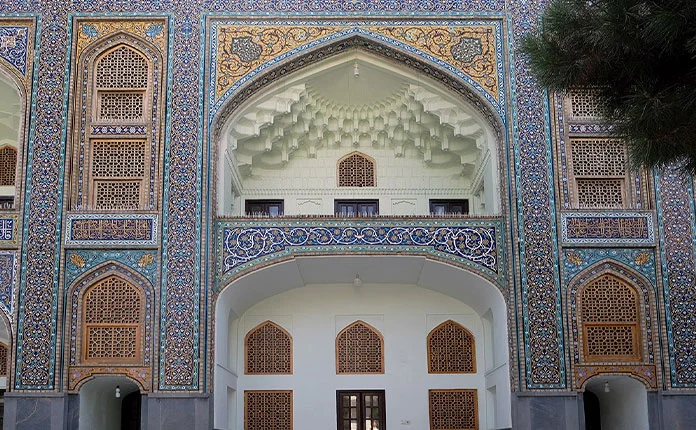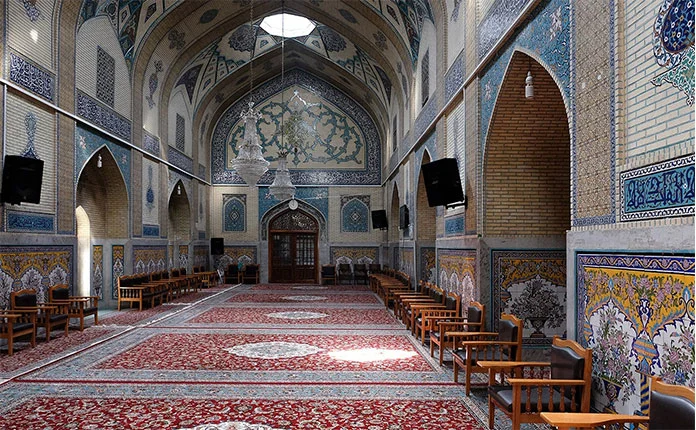The Mirza Jaafar Seminary (established: 1059 AH = 1649-1650 AD) is one of the ancient religious schools and notable Safavid-era structures in Mashhad. this school showcases distinct architecture and caters to students studying religious sciences. Presently, the Mirza Jafar School resides within the precincts of the Imam Reza shrine (a.s.), bordered to the south by the Islamic Revolution Square, to the west by Sheikh Tabarsi School, and encompassed from the north and east by the Razavi University of Islamic Sciences.
This school is currently one of the best attractions in Mashhad that every tourist should see.
History
The Mirza Jafar School was constructed in 1059 AH during the Safavid period under the reign of Shah Abbas II. This establishment was commissioned by two brothers, Mirza Mohammad Tahir, known as Wazir Khan, and Mirza Mohammad Jafar, known as Sarvqad. They were the children of Mirza Taghi Mashhadhi and descendants of Khawaja Shams al-Din Juvini, and it was built on the eastern side of the Old Court (Revolution).

library
The Mirza Jafar School houses a library located on the west side of the building, situated on the second floor. The library boasts exquisite stucco and paintings adorned with golden water. However, during Reza Khan’s reign, the neglect of seminaries led to the deterioration of this mentioned library. As a result, some of its books were relocated to Nawab’s school. After reconstruction and reopening, these books were returned to the library. This extensive library contains over three thousand copies, and its manuscripts have been cataloged by Kazem Modiri Shanachi.
Current situation
this school has transformed into the Razavi University of Islamic Sciences following its merger with Kheirat Khan School.
Architecture
The school spans an area of about 3000 square meters, surrounded by rooms constructed on both upper and lower floors, each featuring a porch. Inside the school, mosaic tiles adorn the interior, with inscriptions on the porches narrating stories about science and knowledge. This school underwent restoration in 1258 AH by the order of Muzaffaruddin Shah, directed to the governor of Khorasan. Inscriptions on the entrance door and the south porch indicate this restoration.

Repairs and renovations
Due to the neglect suffered by Mirza Jaafar school during Nader Shah’s rule, the school lost its former prosperity. It fell into lesser use by students and gradually faded away until 1285 AH, during the tenure of Mohammad Naser Khan Zahir al-Doleh, the governor of Khorasan at that time, when it underwent significant repairs.

In the Pahlavi period, Reza Khan’s policies once again led to disorder, and the school transformed into a warehouse for Astan Quds supplies, serving as a storage place for firewood, wood, and other materials. These actions caused the destruction of its splendor.
During the era of the Islamic Republic, Astan Quds Razavi was splendidly restored thanks to the efforts of the preacher Tabasi.
Who Rests Here
In the spacious lower section to the south of the school, within the crypt, lies the tomb of Sheikh Hor Ameli, Mirza Jafar, and his son. Previously, the entrance door was accessed from inside the school, but now a dedicated entrance has been installed for the aforementioned tomb, accessible from inside the Revolution Square.
